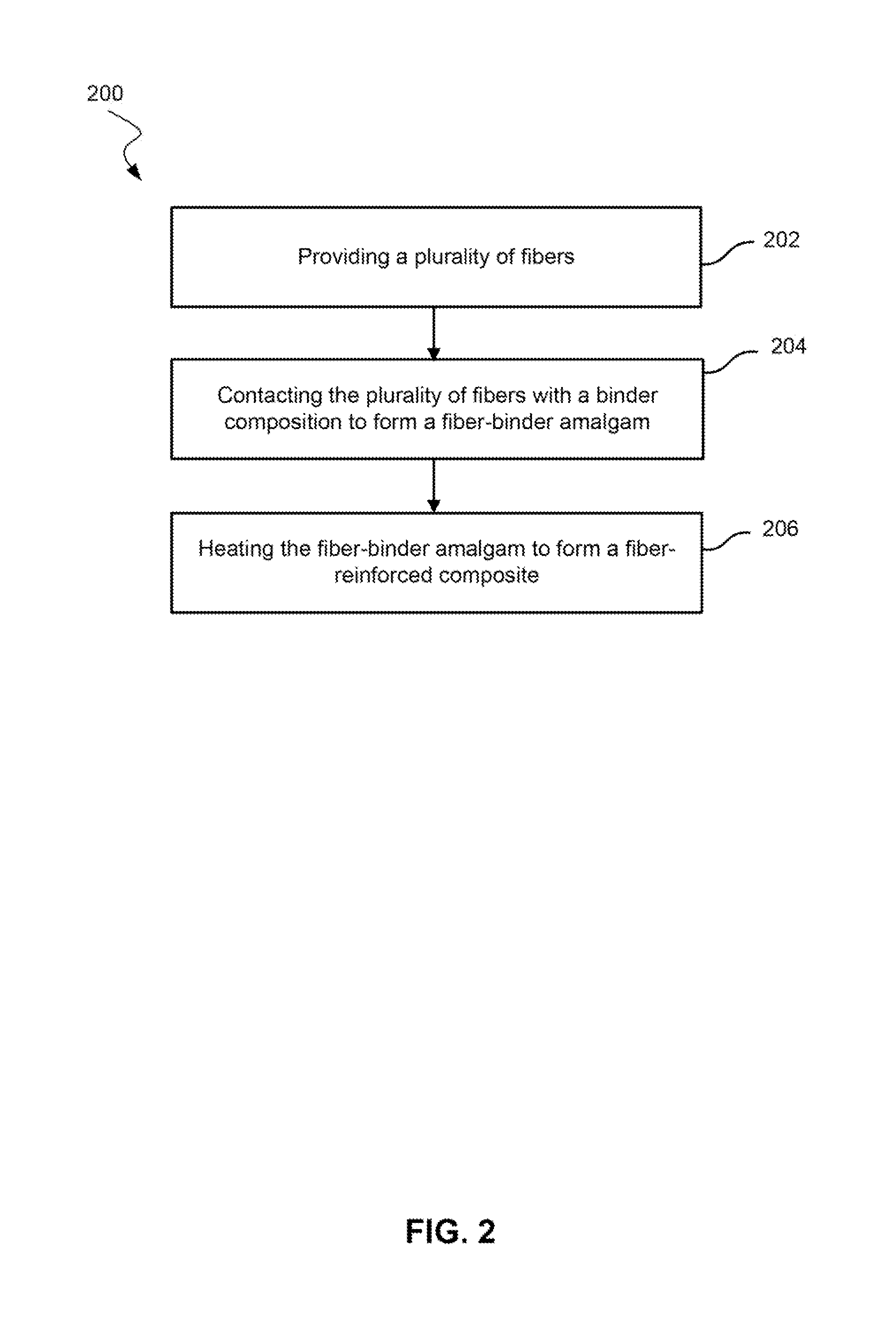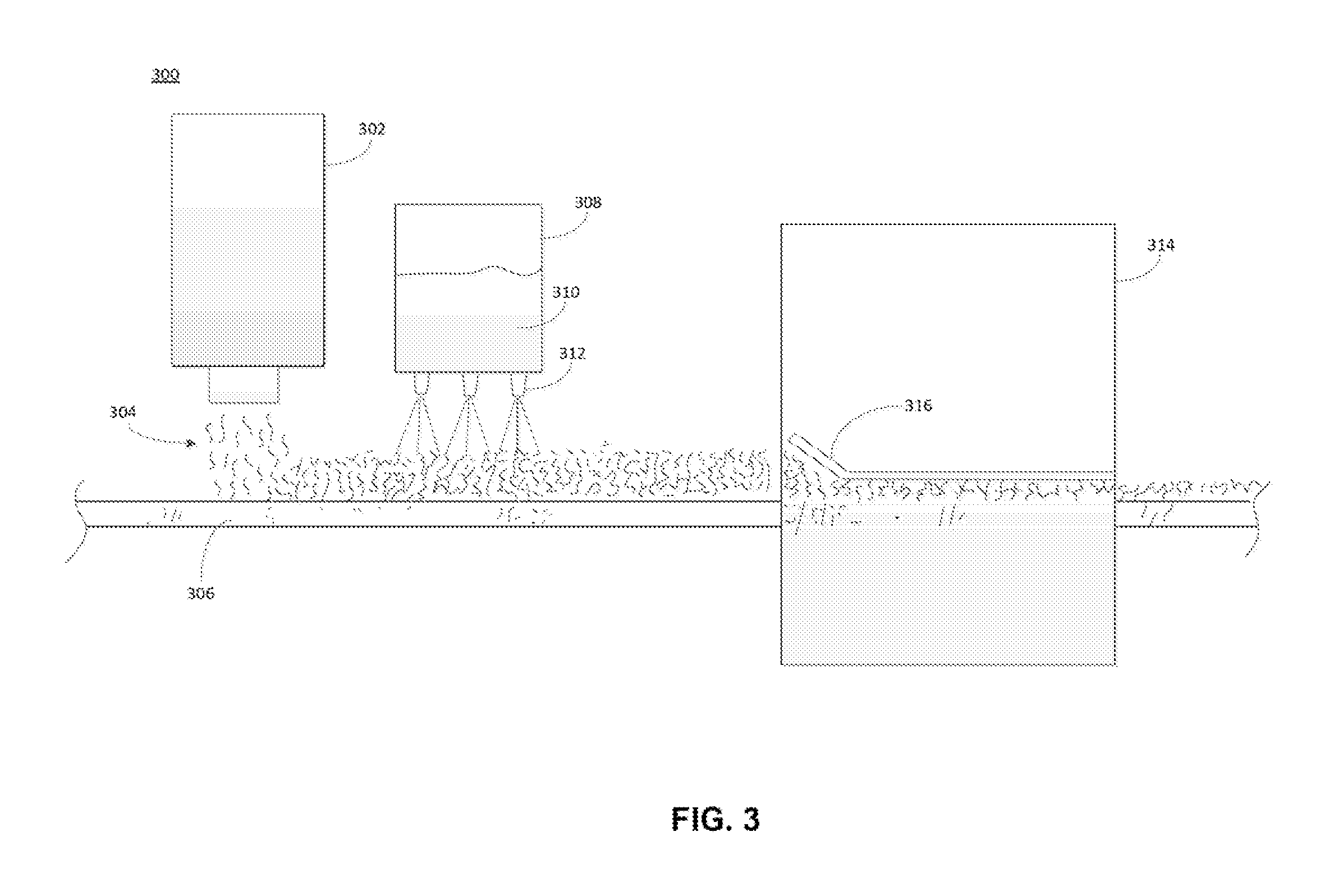Formaldehyde-free melamine carbohydrate binders for improved fire- resistant fibrous materials
a technology of melamine carbohydrate and melamine, which is applied in the direction of textiles, paper, non-woven fabrics, etc., can solve the problems of increasing the use restriction the general fire and achieve the effect of reducing sugars and improving fire and flame resistance of melamine carbohydrate binders
- Summary
- Abstract
- Description
- Claims
- Application Information
AI Technical Summary
Benefits of technology
Problems solved by technology
Method used
Image
Examples
example 1
[0046]Melamine powder was added to and dispersed in a 50% solution of dextrose in water at ambient temperature in a three neck reactor equipped with a stirrer and condenser. The mole ratio of unsubstituted melamine to dextrose was varied from 1:3 to 1:12. The temperature was raised until the melamine dissolved completely, and a clear solution was obtained. The dissolution temperature of melamine was observed at a temperature of 100° C. for the 1:3 melamine:dextrose solution and 65° C. for the 1:12 melamine:dextrose solution.
[0047]Heating of the solution was stopped. A 40% solution of glyoxal in water was added to the hot melamine / dextrose solution. The mole ratio of of melamine to glyoxal varied from 1:0.5 to 1:3. After the addition of glyoxal, an exotherm was observed. This exotherm may indicate that the melamine reacts with the glyoxal.
[0048]The solution was a pale straw color. The solution was allowed to reach ambient temperature. The solutions were catalyzed with either a 10% (b...
example 2
[0049]Fire resistance of the binders of Example 1 was evaluated using a flame penetration method against other carbohydrate-based binders used in building insulation. FIG. 4 shows the mass retention at 500° C. versus time of a melamine-glyoxal-dextrose compared to urea-glyoxal-dextrose. The melamine-glyoxal-dextrose was tested with two different catalysts: ammonium sulfate / ammonium phosphate and ammonium borate / ammonium phosphate. Higher mass retention indicated higher thermal resistance. The melamine-glyoxal-dextrose binders showed superior performance.
example 3
[0050]The procedure of Example 1 is repeated except that after the addition of glyoxal, the resin was kept at 80° C. to 100° C. for 60 to 120 minutes. The resulting clear dark brown resin remained clear when kept at 0° C. for 120 days. This example shows that the long-term solubility of the resin can be improved if the resin remains heated after addition of glyoxal.
PUM
| Property | Measurement | Unit |
|---|---|---|
| temperature | aaaaa | aaaaa |
| temperature | aaaaa | aaaaa |
| temperature | aaaaa | aaaaa |
Abstract
Description
Claims
Application Information
 Login to View More
Login to View More - R&D
- Intellectual Property
- Life Sciences
- Materials
- Tech Scout
- Unparalleled Data Quality
- Higher Quality Content
- 60% Fewer Hallucinations
Browse by: Latest US Patents, China's latest patents, Technical Efficacy Thesaurus, Application Domain, Technology Topic, Popular Technical Reports.
© 2025 PatSnap. All rights reserved.Legal|Privacy policy|Modern Slavery Act Transparency Statement|Sitemap|About US| Contact US: help@patsnap.com



